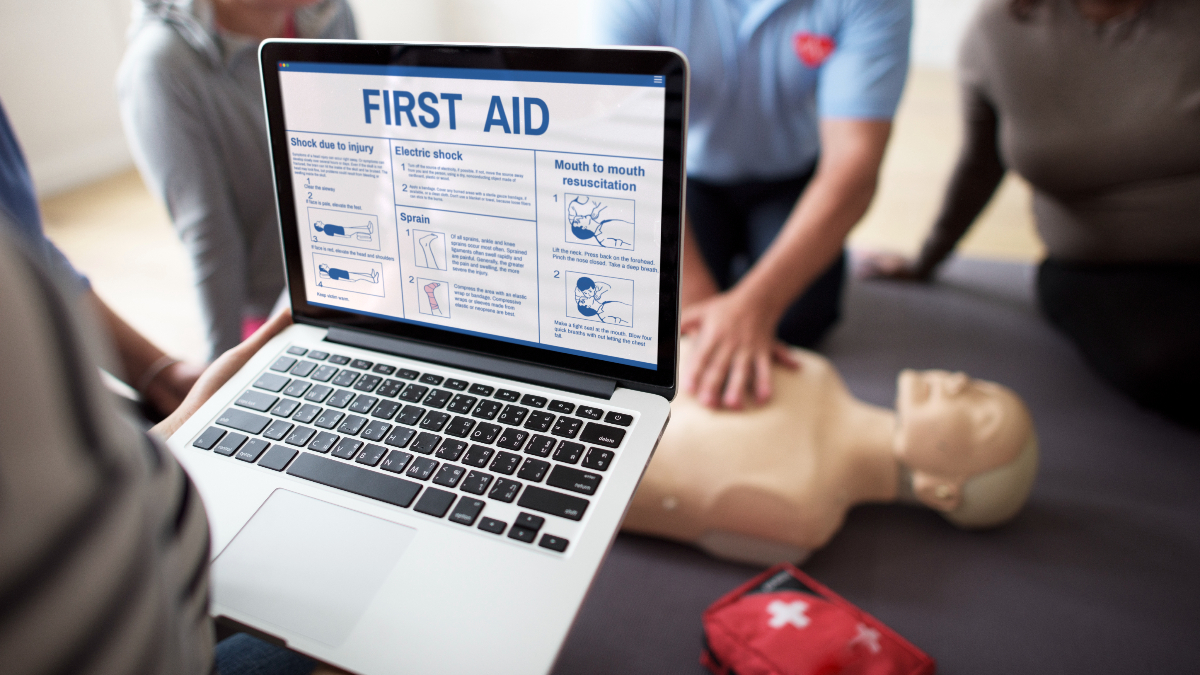Every business needs a comprehensive set of first aid policies that it strictly adheres to ensure the maximum safety of its employees. Every organization owes it to its employees to prevent minor injuries and serious illnesses by implementing first aid rules. This legal duty of the employer warrants immediate attention and medical care given to employees in cases of injury or illness.
This does not necessarily only apply to illnesses or injuries that are directly work-related – no matter what the cause or source, every employer has a duty of care to their staff. They must be attended by a qualified first aider who can professionally manage the situation and call for professional help as necessary.
Legal Obligation
Health and Safety First Aid Regulations clearly state that all employers are responsible for providing adequate first aid equipment and there must be at least one fully-trained first aid professional appointed by the organisation. The minimum requirements are designed to ensure the safety of employees at every small business, from having a first aid box to a trained first aider on hand.
A first aid kit should contain all necessary supplies, including a set of sterile bandages and plasters, disposable gloves, and some basic medication. It must also have a leaflet providing general guidelines on providing first aid. Businesses must also conduct a First Aid Training at Work – this typically includes training about how you should medically treat cuts and wounds, deal with shocks, injuries, choking, and treat an unconscious person.
Risk Assessment
Every workplace is different and depending on the nature of the work, first aid requirements can differ dramatically. Businesses need to have policies in place which are sufficient to address the risks associated with the kind of work your employees do.
This policy should include everything from the number of first aid officers and the first aid equipment you need to have, to whether an appropriate facility such as a room or dedicated area for performing first aid is required. It’s essential that the requirements are followed as laid out in the policy.
While you are assessing risks in your business, you should consider:
- The size of your organisation, the number of buildings, amount of staff, and shifts hours
- The riskiness of the work and equipment used, such as whether machinery or chemicals are involved
- History of accidents and injuries onsite
- Whether you have mobile or lone workers
- Medical conditions of your employees such as diabetes, any severe allergies, epilepsy, or any other concern that requires advanced training
Training
After completing a risk assessment, the next step is to start with first aid training. As a business owner, it’s your responsibility to ensure that first aiders are regularly retrained so that they maintain their skills.
There are essentially five different aspects of good first aid training:
- The teaching method must be designed in a way that allows trainees to develop hands-on skills. Trainees need to build confidence by being exposed to acute injury and illnesses setting so that they’ll be able to quickly responsd in a real life situation.
- Instructions and details related to treating any injury should be discussed in detail. Trainees should be taught how to interact with local EMS systems and they should be given an up-to-date list of all emergency telephone numbers.
- The training program should teach employees about assessing the scene, severity of the injury, and nature of the accident. First aiders should also know how to assess a patient for responsiveness such as checking breathing, circulation, and any other medical alerts.
- Trainees must also know how to respond to life-threatening emergencies appropriately. They must be able to perform rescue breathing, CPR, control bleeding by direct pressure, and respond to other emergencies such as abdominal injury and pregnancy complications.
- The training program should also include first aid instructions for managing non-life-threatening emergencies such as wounds, burns, musculoskeletal injuries, temperature extremes, and eye injuries.
Equipment
Every business should have first aid kits of an appropriate size based on the number of employee on site. There is no legislation that details what exactly should be in the first aid kit, but it is important that the contents is appropriate to the setting.
Any additional equipment might be required based on the nature of the work or the location. This could be chemical kits, eye washing stations, defibrillators, and burns kits, depending on the nature of your business.
Records
It is important to keep detailed records of all incidents that occur as it allows you to improve your first aid programs and make adjustments accordingly. The best way to do so is to use an Accident Book with all relevant details. This will help you to analyse risks and how they can be mitigated.
Final Words
There is no denying that prevention is better than cure, but it is impossible to avoid all potential dangers and hazards in a business. However, having a strong first aid policy ensures that you minimise these risks by appointing first aid personnel and equipping them with the tools they need to prevent any mishap from turning into a disaster.

